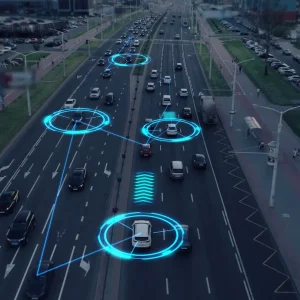Big brother, we now know, doesn’t just watch you. He likes to read your number plates too.
For example, when one of your vehicles is on the motorway, the Highways Agency is able to keep a constant watch on its speed using automatic number plate recognition (ANR) cameras.
Yes, constantly. Not merely in roadworks. The agency, which rather proudly says it maintains at least one electronic gadget for every mile of motorway, now continually monitors traffic via ANRs across the motorway network.
As Michael Caine used to say, I bet you didn’t know that.
There’s nothing sinister about our ANRs, insist the agency. The data is scrambled to hide the identity of individual vehicles. It is merely used to monitor traffic speeds. So, for instance, when you’re on the M1 and you see one of those helpful electronic signs telling you that you are 40 miles and 36 minutes from Sheffield, the information isn’t a guesstimate, it’s real-time data from vehicles 40 miles ahead of you.
At least I now know that these frankly rather pointless messages are brought to me courtesy of a great deal of sophisticated roadside hardware that’s been hooked up to a 4000 gigabyte computer system at Traffic Central in Birmingham.
But I’m not sure quite how I feel about that. Part of me is pleased to know that lots of friendly civil servants and boffins are working hard to give road users a safe and speedy journey in return for the billions of pounds of tax we pay each year.
On the other hand, knowing that ‘blind’ sensors and detectors are now being supplemented with ANRs is not altogether comforting. As far as I know, the only other uses for these cameras are for enforcing speed limits and the London congestion charge.
Clearly, the ANRs give traffic controllers a much more detailed picture of what’s happening on the network. But whether the Government will be content, in the long run, to employ them simply to tell you and I that we’re 24 minutes from Telford is, I think, open to question.
One fairly obvious use for them would be to in a system for charging people to drive on motorways. However, the justification for bringing in tolls has been looking weaker and weaker for many months as every quarterly statistics bulletin from the DfT shows a further decline in car traffic.
Van traffic, the latest figures released this week show, is now following suit. Traffic levels will doubtless trend back up again when the economy picks up but it’s clear that the underlying trend in traffic growth is nowhere near enough to support the Government’s forecasts for near-gridlock by the end of the next decade.
For the most part, the Highway’s Agency’s investment in what it calls ‘high tech wizardry’ to manage traffic flows on motorways seems to be working very well already. Using these ANRs merely to tell drivers that the road ahead is clear is a bit geeky but there’s no justification at present for using them to do anything more.





